The game of pickleball is a fun, fast-paced paddle sport that can be enjoyed by people of all ages. The basic rules are easy to learn and follow, so anyone can play pickleball.
What are the 5 rules of pickleball?
While there are a few more than 5 rules to pickleball, the game can be simplified into the following five rules. Essentially the five rules of pickleball are that the ball must stay inbounds, there should be one bounce per side, serving must be done at the baseline, the service can’t land in the no-volley zone, and the game ends at 11, 15, or 21 points. There are minor rules, including one in which the ball can’t bounce twice (the “double bounce rule”).
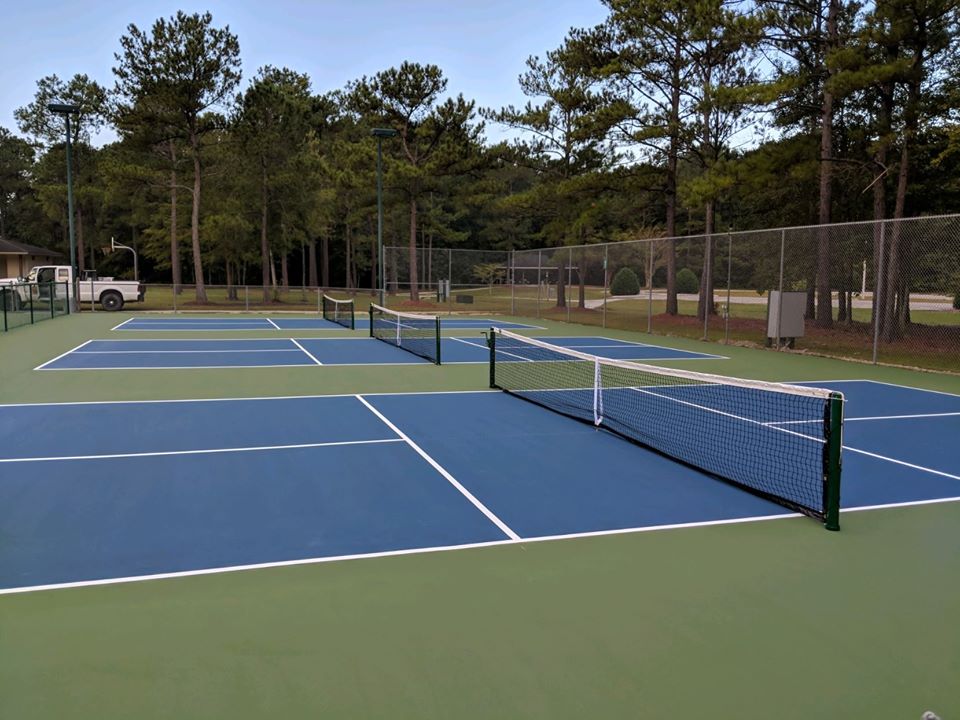
The Ball Can’t Fall Out of Bounds On Your Side Of The Court
The ball must stay in bounds when it hits the ground, or else it is a point for the other team.
The good news is that if you do hit the ball out of bounds, it’s not the end of the world. Pickleball is unique in that it requires that the ball bounce both during the service and the return of serve, which takes away some of the benefits of serving.
Along with hitting the ball out of bounds, hitting it into or under the net are also called “Faults”. A fault gives the ball to the opposing team, which is what makes pickleball different.
Only the serving team can score points. If you win the point as the serve returning team, you get the ball and the chance to score a point.
Serving Team Regulations
A highly complex aspect of pickleball is knowing how to serve the ball. Each pickleball point will consist of one service.
At the start of the game, most players will flip a coin to determine the team that will be the first server. Luckily, the advantage between the serving and receiving teams is not very significant.
To start the game, the first server serves balls on the right side. After the first point is scored, the server changes and serves balls to the left side.
Each player is allowed only one serve attempt. The service alternates back and forth until a player commits a fault.
The player who served last in the previous point will serve first in the new point.
The ball has to be held underhand and below the waistline and at least one foot must be behind the baseline to ensure that the service is starting from the proper distance.
If you lose track of who is serving, just remember that the player who served last in the previous point always starts the new point by serving from their right side.
You Cannot Serve In The No-Volley Zone
This rule is pretty self-explanatory – you cannot serve the ball if it will hit your opponent within the no-volley zone. If the ball does end up hitting your opponent within this zone (or any other part of their body), it is a fault.
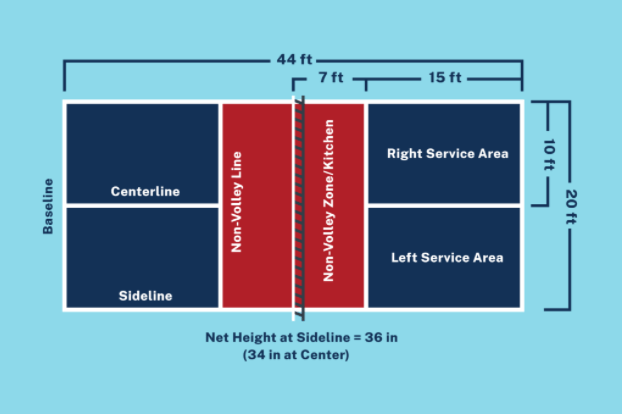
The serve must be served to the other side of the court
Hit the ball diagonally to the opposite side of the court. In singles play, you can’t hit it directly across, or it will cause a fault.
During The Serve, The Ball Can’t Touch The Opposing Team No-Volley Zone
This is a pretty simple rule – if the ball hits the no-volley zone on the other team’s side, it is a fault.
The non-volley zone line is the 7-foot by 20-foot area on either side of the net. This line is sometimes called the kitchen line. You will hear people saying “stay out of the kitchen”, meaning you cannot enter that area of the court if the ball is not bouncing around this quadrant.
This is a safety rule to prevent people from running into each other and to keep players from camping out near the net and slamming volleys all day long – it makes the game more difficult and encourages players to stay back and rally more.
If the ball touches the non-volley zone on the serve, this is a fault and you lose your serve. You must serve beyond it. After that, however, you are free to “drop-shot” the ball into the kitchen area.
Pro tip:
As the serving team, try to serve deep towards the baseline of the opposing team. Keeping the opposing team near their baseline while playing up near the non-volley zone line is a key to creating a serve and volley advantage.
The “Double Bounce Rule” + Only One Bounce Per Side
In pickleball, the ball can only be hit once per side before it has to bounce again. This is known as the “double bounce rule.” If the ball bounces twice on your side of the net, the team who let the ball bounce twice has lost that point.
In addition, there has to be at least one bounce per side on both the serve AND the return of serve. The receiving team must allow the ball to hit before the service can be returned, and this return must be allowed to hit the ground before being played as well.
After the completion of the requirements of the two bounce rule has been satisfied, either team may play a ball either in the air or after a single bounce.
Pickleball Ends at 11, 15, or 21 Points
A traditional pickleball game consists of 11 points. In addition, a team must win by at least 2 points. If you’re at 11 and the opponent has 10, the match goes on.
Some pickleball games extend the score to 15, whereas others go all the way up to 21. In a solo game of pickleball, 11 or 15 are the most common point totals. When you’re playing doubles, 15 or 21 are the most common point totals. You’ll be able to discuss the total with your team and the opponents.
When you’re playing a game to 11 points, the teams switch sides after the first team scores 6 points. On the other hand, games that play to 15 or 21 points switch when the first team scores 8 points.
Pickleball scoring
Pickleball scoring is quite simple. If the receiving team hits the ball out of bounds or lets the ball bounce twice, the serving team’s score increases by one.
If the serving team lets the ball bounce twice or they hit the ball out of bounds, the server loses the serve and the receiving team becomes the serving team.
Only the serving team can score points
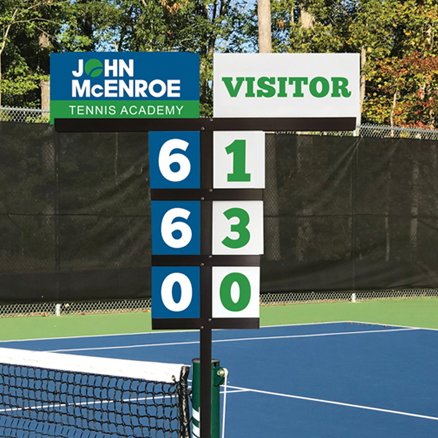
Other Common Questions
Is pickleball easier than tennis?
That’s up for debate, but one thing is for sure: the five rules of pickleball are much simpler than the dozens of regulations governing tennis.
Generally speaking, the size of the pickleball court is substantially smaller. This allows players to cover more of the court with less effort while providing more opportunities for drawn-out rallies. These rallies build suspense and team comradery.
Can you step into the “kitchen” in pickleball?
Yes, you can step into the “kitchen”, or non-volley zone in pickleball, but only after a ball has bounced in that area. This is to prevent teams from camping out in the non-volley zone and promotes a more rally-focused game.
How is pickleball different than tennis?
While pickleball and tennis are similar, they are also very different. The three major differences are found in the service sequence, the size and layout of the court, and the type of ball and racquet used.
Pickleball Service Sequence
The first major difference with tennis, the server has two chances to make a good serve. If they miss their first serve, they get a second chance. In pickleball, however, there is only one serve per turn. This makes each serve much more important and puts pressure on the server to make a good shot.
Size and Layout of Court
The size and layout of a pickleball court is different than tennis. Pickleball courts are smaller and they have a 7-foot zone in front of the net that tennis doesn’t have. They are generally 20 feet wide and 30 feet long, compared to the 27 feet wide by 60 feet long dimensions of a tennis court. You can fit 4 pickleball courts inside of a standard tennis court.
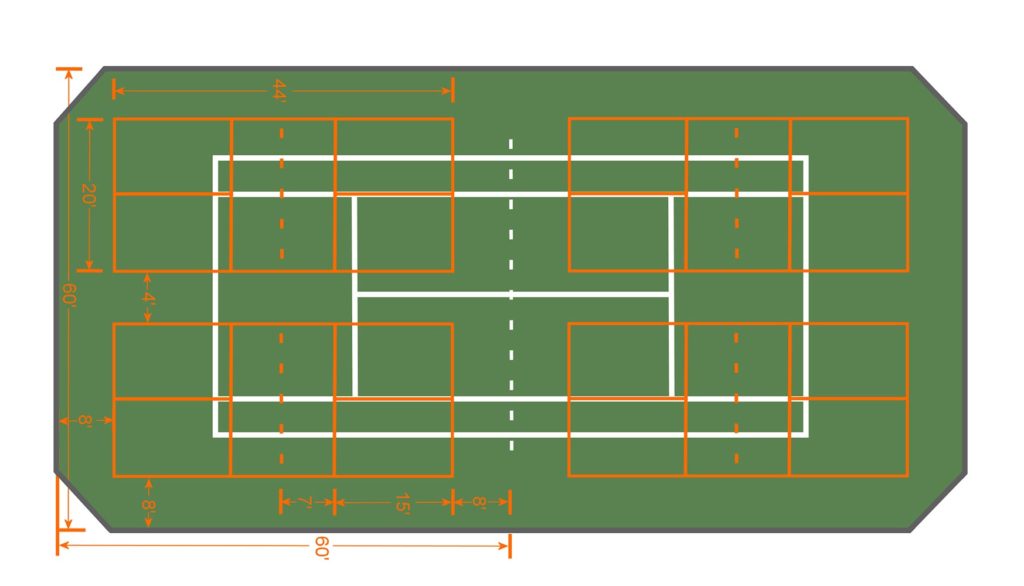
The third major difference between pickleball and tennis is the type of ball and racquet used.
Pickleballs are larger than tennis balls and have a hole in the middle. This makes them slower, which encourages more rallies. Pickleball racquets are also different than tennis racquets. They are generally smaller, lighter, and have a wider grip. This makes them easier to use for people with smaller hands.
While there are many similarities between pickleball and tennis, there are also several key differences that make each game unique. By understanding these differences, you can become a better player and enjoy the game even more.
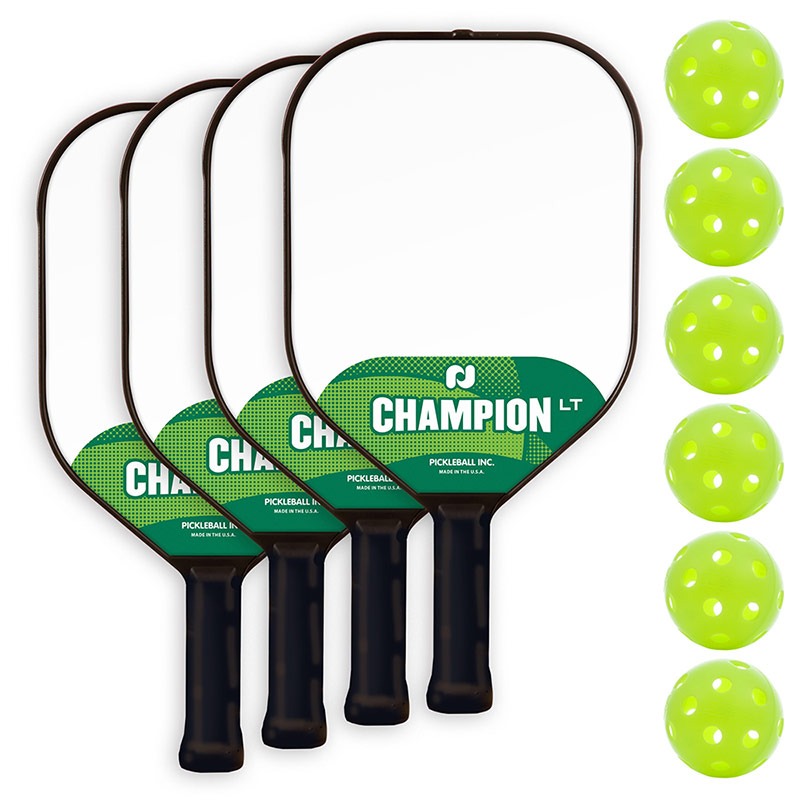
Contact North State Resurfacing for all of your pickleball needs
North State Resurfacing provides commercial installation and resurfacing of pickleball, tennis, and basketball courts in North Carolina. We also are the area’s leader in Pickleball and Tennis court supplies. Contact North State by calling (919) 365-7500 or filling out a contact form below.
